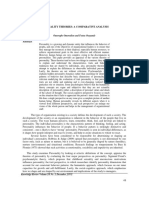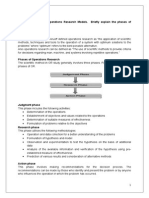0% found this document useful (0 votes)
204 views17 pagesStatistics Notes
This document provides an overview of key concepts in statistics including:
1) Inferential statistics involves drawing conclusions about populations from samples and is based on uncertainty and variation.
2) Descriptive statistics are used to summarize and describe samples through measures like means, medians, and standard deviations.
3) Probability is the transition between descriptive statistics and inferential methods and is important for statistical inference.
4) Common sampling procedures include simple random sampling, stratified random sampling, and experimental design.
Uploaded by
anon_673298142Copyright
© © All Rights Reserved
We take content rights seriously. If you suspect this is your content, claim it here.
Available Formats
Download as PDF, TXT or read online on Scribd
0% found this document useful (0 votes)
204 views17 pagesStatistics Notes
This document provides an overview of key concepts in statistics including:
1) Inferential statistics involves drawing conclusions about populations from samples and is based on uncertainty and variation.
2) Descriptive statistics are used to summarize and describe samples through measures like means, medians, and standard deviations.
3) Probability is the transition between descriptive statistics and inferential methods and is important for statistical inference.
4) Common sampling procedures include simple random sampling, stratified random sampling, and experimental design.
Uploaded by
anon_673298142Copyright
© © All Rights Reserved
We take content rights seriously. If you suspect this is your content, claim it here.
Available Formats
Download as PDF, TXT or read online on Scribd
/ 17

























































































